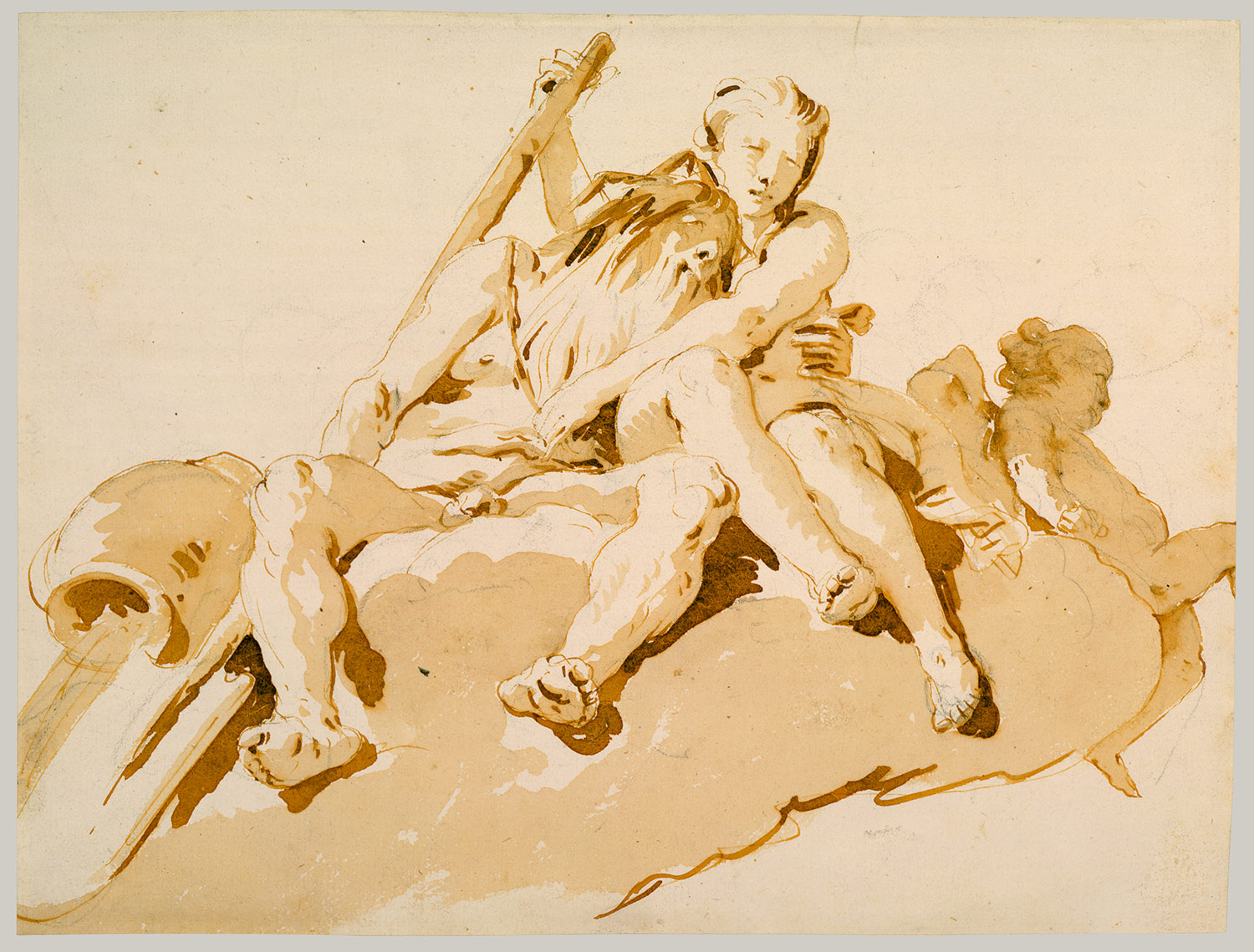Ok, I've been starting with a drawing in waterproof India ink and then washing over it, trying to give the ink enough time to dry and cure completely (and still getting smearing issues sometimes). Apparently it's a common practice to first lightly pencil in the drawing very sketchily, then go directly to wash, and then ink or pencil in the final linework, often right onto the still-wet wash.
I want to try doing studies from master drawings, and trying to work the same way they did (some had very distinct approaches). It's recommended to use watercolor for wash rather than ink because ink usually looks harsh - interesting. Ok, I'll keep that in mind.
Various approaches to doing a wash drawing :
- Filling in the entire figure with one solid wash of a single value, then sketching in linework
- Essentially the same thing, but only fill in the shadow side with wash
- A more detailed method (Tiepolo stylie) using 2 values of wash to develop a darker level of shading and more fully develop the volumes. Notice he isn't using the dark wash for shading, only for cast shdows and only where he wants the image to really pop.
The importance of doing wash drawings
is that it's a fantastic way to make you think in terms of major plane breaks and rapidly develop a large dark/light value plan. This helps to impress in your mind the importance of these basics, and keeps a solid sense of form in your work, so when you go to paint you don't just start in with a lot of detailing and forget about blocking in the big forms.Damn, looks like I need to shell out the big bucks for a nice fat Kolinsky round, like a #10 or so.

No comments:
Post a Comment